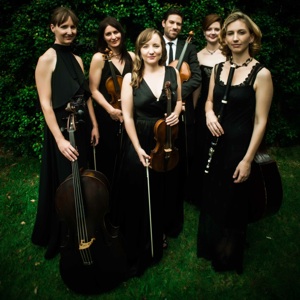Australian Haydn Ensemble
St Jude’s, Bowral, 17 August 2013
St Jude’s, Bowral, 17 August 2013
The only thing better than one performance of the Haydn Ensemble is to be given the opportunity to experience another, and soon thereafter. The Ensemble which performed at St Jude’s on 5 July performed again on Saturday 17 August. This time the configuration was different with some additional performers to make twelve rather than the seven of the earlier performance. And again there was a guest Director and soloist, Erin Helyard, who has both impressive academic qualifications in musicology and performance record.
The Ensemble’s commitment is to period music with appropriate instruments. In this performance the group focussed on some composers who are not as well-known as those presented in July. Then it was the eponymous Haydn, with Beethoven and Mozart, along with Johann Salomon who was not known to the writer (whose knowledge of music is hardly extensive). This time we were privileged to hear works by composers who surely are not as well-known as those presented in July.
It was puzzling at first, trying to follow the performance. While the Program was clear and well presented, there were two difficulties, certainly to one not familiar with the composers and their works. One is that the works were not performed in the order set out; the other is that there were no notes on one of the major works. Thus:
First we heard a Sinfonia composed by Frederick II, known as The Great. C.P.E. Bach was himself a musician in Frederick’s court although there is no suggestion that he influenced Frederick who was influential in the development of music during the 18th Century and was a composer in his own right. Hence the Sinfonia No.1.
The concerto was followed by a Concerto for Harpsichord by C. P.E. Bach, a son of the perhaps now more well-known J. S. Bach. Erin Helyard performed on the harpsichord while directing the group - which he did with all the works presented. The harpsichord was developed in the 16th Century and was widely used into the 18th Century when it gradually disappeared. There was a resurgence in its use through the 20th Century as musicians sought to use period instruments. The work presented by Mr Helyard was compelling in its liveliness and the clarity of his playing on this instrument.
After the interval we heard the first of two of C. P. E. Bach’s Sinfonias for Strings, in this performance, with the harpsichord accompaniment. These two were part of a set of six Bach Sinfonias composed after he moved on from his court service of Frederick in the latter part of the 18th Century. The second was the last work for the evening’s performance. In between these two Sinfonias we were privileged to hear a Concerto for Flute performed by Melissa Farrow, with a period instrument, a compelling performance by an accomplished flautist.
It was another wonderful evening which seemed to be greatly appreciated by those present - who included a number of young people who had participated in a teaching program presented by some Ensemble members at Frensham School. Thus we can be grateful for this relatively new group; may they prosper and may they return soon.
Stanley Croker
The Ensemble’s commitment is to period music with appropriate instruments. In this performance the group focussed on some composers who are not as well-known as those presented in July. Then it was the eponymous Haydn, with Beethoven and Mozart, along with Johann Salomon who was not known to the writer (whose knowledge of music is hardly extensive). This time we were privileged to hear works by composers who surely are not as well-known as those presented in July.
It was puzzling at first, trying to follow the performance. While the Program was clear and well presented, there were two difficulties, certainly to one not familiar with the composers and their works. One is that the works were not performed in the order set out; the other is that there were no notes on one of the major works. Thus:
First we heard a Sinfonia composed by Frederick II, known as The Great. C.P.E. Bach was himself a musician in Frederick’s court although there is no suggestion that he influenced Frederick who was influential in the development of music during the 18th Century and was a composer in his own right. Hence the Sinfonia No.1.
The concerto was followed by a Concerto for Harpsichord by C. P.E. Bach, a son of the perhaps now more well-known J. S. Bach. Erin Helyard performed on the harpsichord while directing the group - which he did with all the works presented. The harpsichord was developed in the 16th Century and was widely used into the 18th Century when it gradually disappeared. There was a resurgence in its use through the 20th Century as musicians sought to use period instruments. The work presented by Mr Helyard was compelling in its liveliness and the clarity of his playing on this instrument.
After the interval we heard the first of two of C. P. E. Bach’s Sinfonias for Strings, in this performance, with the harpsichord accompaniment. These two were part of a set of six Bach Sinfonias composed after he moved on from his court service of Frederick in the latter part of the 18th Century. The second was the last work for the evening’s performance. In between these two Sinfonias we were privileged to hear a Concerto for Flute performed by Melissa Farrow, with a period instrument, a compelling performance by an accomplished flautist.
It was another wonderful evening which seemed to be greatly appreciated by those present - who included a number of young people who had participated in a teaching program presented by some Ensemble members at Frensham School. Thus we can be grateful for this relatively new group; may they prosper and may they return soon.
Stanley Croker
